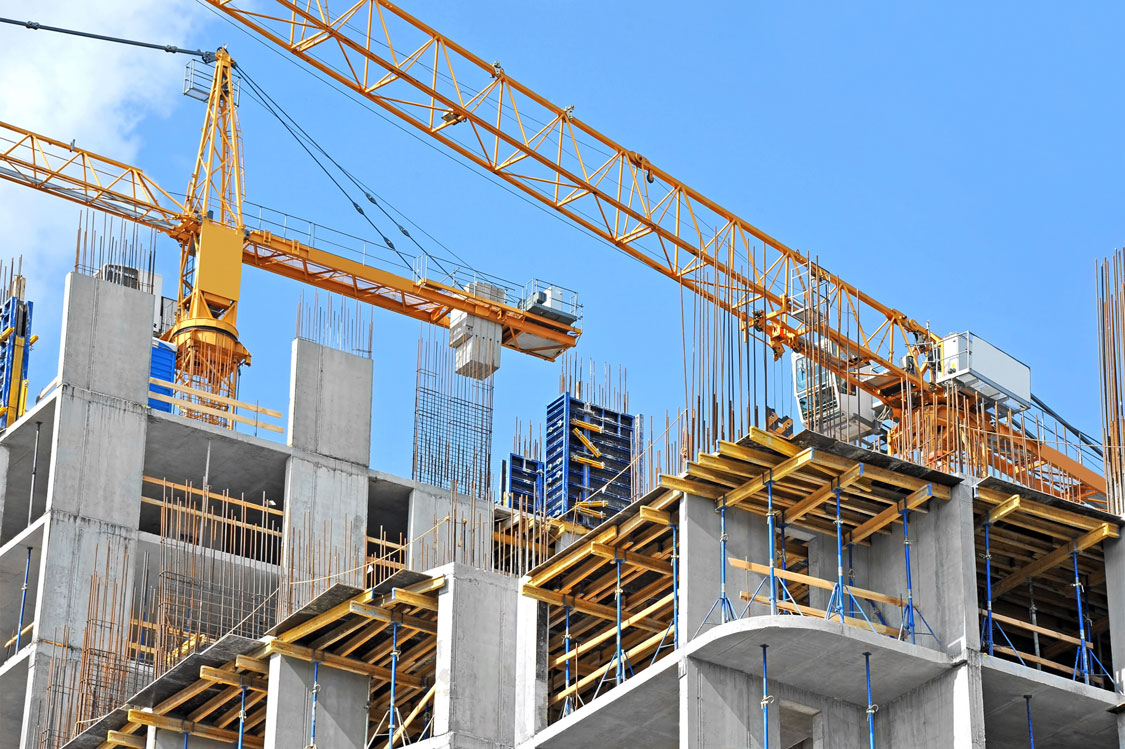A Bird’s Eye View
Monthly Newsletter

Changes are Taking Hold for Construction Financing
May 2024
Key Highlights
The market for construction debt has posed challenges for borrowers in the higher, post-COVID interest rate environment, although in recent months, the market has presented more opportunity.
As we progress through 2024, evidence is beginning to show that life companies and traditional banks’ appetite for construction loans has increased.
Recently, we worked with a life company lender offering a range of financing for developers with options to accommodate different scenarios.
Putting Construction Financing Challenges into Context
The market for construction debt has seen its share of challenges of late. According to a recent report by the Urban Land Institute, construction financing across multiple asset classes decreased by 38 percent in 2023 on a year-over-year basis. Higher interest rates were a prominent driver of the lower volume, but weaker asset performance has also put a damper on financing activity, with certain asset classes bearing the brunt of the slowdown.
Given these dynamics, development activity slowed last year, however evidence is mounting that demand for construction financing could be staging a comeback. We have seen lenders making construction financing more available than it has been since earlier in the Federal Reserve’s rate hiking regime. For developers sitting on stalled projects or waiting to put plans in motion for new projects, it is a reasonable time to reevaluate construction financing options.
Given these dynamics, development activity slowed last year, however evidence is mounting that demand for construction financing could be staging a comeback. We have seen lenders making construction financing more available than it has been since earlier in the Federal Reserve’s rate hiking regime. For developers sitting on stalled projects or waiting to put plans in motion for new projects, it is a reasonable time to reevaluate construction financing options.
Competition Among Construction Lenders is Beginning to Ramp Up
In recent weeks, our team has been providing guidance to clients that more lenders, notably life companies and traditional banks, are beginning to compete on construction debt. According to the Urban Land Institute report referenced earlier, banks represented 61% of total construction lending in 2023, so an uptick in the willingness to extend financing could be a notable development in the second half of the year.
Recently, we have seen some construction lenders offer limited recourse, as low as 25%, which is a definite boon for developers. At the same time, developers seeking non-recourse construction financing have options, although the supply of that capital remains very limited.
Additionally, we recently closed a transaction between a developer and their preexisting lender relationship, which we had previously established. This is a prime example of how, in the current environment, established relationships and loyalty can result in a more accommodative stance and benefit the borrower.
While these are positive short-term improvements in the construction financing market, it is important to note key qualifying factors that continue to relegate some developers to the sidelines. Specifically, many construction financing providers are placing strong emphasis on extending credit to high-quality sponsors with demonstrable experience developing successful projects in the asset class for which they are seeking financing. Additionally, lenders are performing detailed market analysis to validate leasing velocity and rental rate opportunities.
Recently, we have seen some construction lenders offer limited recourse, as low as 25%, which is a definite boon for developers. At the same time, developers seeking non-recourse construction financing have options, although the supply of that capital remains very limited.
Additionally, we recently closed a transaction between a developer and their preexisting lender relationship, which we had previously established. This is a prime example of how, in the current environment, established relationships and loyalty can result in a more accommodative stance and benefit the borrower.
While these are positive short-term improvements in the construction financing market, it is important to note key qualifying factors that continue to relegate some developers to the sidelines. Specifically, many construction financing providers are placing strong emphasis on extending credit to high-quality sponsors with demonstrable experience developing successful projects in the asset class for which they are seeking financing. Additionally, lenders are performing detailed market analysis to validate leasing velocity and rental rate opportunities.
A Recent Client Success Story Points to Greater Availability of Construction Capital
In our experience, life companies have historically shown a propensity to focus on construction-to-perm loans. However, we recently took note of a life company lender that has broadened its range of construction financing offerings. These offerings take three forms to accommodate a range of borrower scenarios.
First, the lender is offering a participation construction program to self-storage developers where the borrower and lender split cash flow and sales proceeds on a 65%/35% basis, although we have seen participation levels vary based on the nature of the deal. In exchange for the participation feature, the lender has offered attractive fixed interest rates as low as 6%, a 3-year interest-only term, followed by a 25-year amortization period. Other program details include loan sizes ranging from $8 million to $80 million, with the loan-to-cost ratio potentially getting into the low 80% range. The debt service coverage ratio (DSCR) requirement is 1.0 during the interest-only term and 1.25 thereafter.
It is important to note that this product comes with two qualifying factors. First, the lender requires the completion of a third-party feasibility study before issuing a final term sheet. Second, new borrower relationships will be required to issue a full repayment guarantee.
In addition to the participation construction program, the lender is offering a non-participating financing for industrial and multifamily developments. Pricing on loans to finance spec multifamily developments is starting at 300 basis points over the 5-year Treasury rate, and pricing on loans to finance spec industrial developments is starting at a 250 basis point spread. Non-participating construction to perm arrangements are being offered as well.
Finally, the lender is offering a basic perm loan program. This arrangement provides developers with nonrecourse debt with spreads beginning at 170-210 basis points over the 5-year Treasury rate. The spread is determined by the stabilized nature of the property, with prime warehouse assets tenanted by the strongest credit profiles seeing the lowest spreads.
First, the lender is offering a participation construction program to self-storage developers where the borrower and lender split cash flow and sales proceeds on a 65%/35% basis, although we have seen participation levels vary based on the nature of the deal. In exchange for the participation feature, the lender has offered attractive fixed interest rates as low as 6%, a 3-year interest-only term, followed by a 25-year amortization period. Other program details include loan sizes ranging from $8 million to $80 million, with the loan-to-cost ratio potentially getting into the low 80% range. The debt service coverage ratio (DSCR) requirement is 1.0 during the interest-only term and 1.25 thereafter.
It is important to note that this product comes with two qualifying factors. First, the lender requires the completion of a third-party feasibility study before issuing a final term sheet. Second, new borrower relationships will be required to issue a full repayment guarantee.
In addition to the participation construction program, the lender is offering a non-participating financing for industrial and multifamily developments. Pricing on loans to finance spec multifamily developments is starting at 300 basis points over the 5-year Treasury rate, and pricing on loans to finance spec industrial developments is starting at a 250 basis point spread. Non-participating construction to perm arrangements are being offered as well.
Finally, the lender is offering a basic perm loan program. This arrangement provides developers with nonrecourse debt with spreads beginning at 170-210 basis points over the 5-year Treasury rate. The spread is determined by the stabilized nature of the property, with prime warehouse assets tenanted by the strongest credit profiles seeing the lowest spreads.
Final Thoughts
Throughout 2023 and into early 2024, many developers were impacted by tighter market conditions for construction financing. More recently, we have observed an uptick in competition among lenders offering construction financing programs, and this is providing developers with the opportunity to work with a capital expert to reassess the viability of projects that were previously paused.
(1) Construction Financing Outlook: Developers Scramble to Line Up Both Debt and Equity
Talonvest Capital specializes in structuring and negotiating comprehensive capital solutions for owners of industrial, self-storage, multifamily, office, and retail assets. We create tailored capital solutions for our clients by sourcing cutting-edge lending programs and advising on capital markets trends.
Stay Informed
Subscribe to stay up to date on current trends in the perm, bridge, and construction lending market based on our real deal experiences and discussions with banks, life companies, debt funds, private lenders, and CMBS lenders.

